Top Backgammon Books - Part 2
Welcome to the second installment of our comprehensive guide to the world of backgammon literature. In this section, we’ll introduce you to a selection of books that delve into various aspects of the game, from recent backgammon history and complex mid-game scenarios to invaluable insights from champion players. Whether you’re a beginner looking to build a strong foundation or a seasoned player aiming to refine your skills, these books offer a wealth of knowledge to help you on your backgammon journey
1. The Backgammon Chronicles — Robert Wachtel (2020)
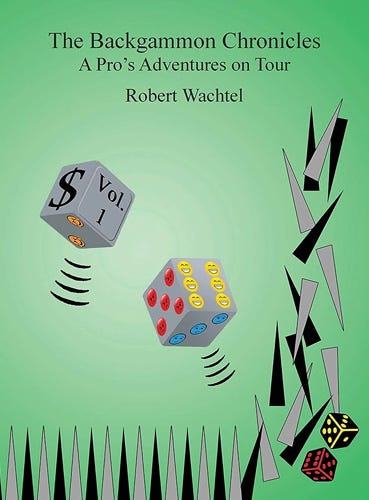
In this richly-illustrated two-volume set, Bob Wachtel captures the contemporary backgammon scene of the past decade our so by relating his wide experience of the game in a dazzling variety of settings and situations, introducing you to many prominent and colorful players of our times. While the focus is on recent history, Bob draws on his earliest days in the game in the late 1970’s as well, providing a useful account of how the traditions, practices, and social conventions surrounding the game have evolved over time — especially due to the advent of the ‘bots. The mode of these volumes is anecdotal and philosophical, so practical backgammon-playing wisdom is only secondary, but the reader will come away with valuable perspectives on how to behave and thrive in the world of competitive backgammon.
2: What’s Your Game Plan? — Mary Hickey & Marty Storer (2011)
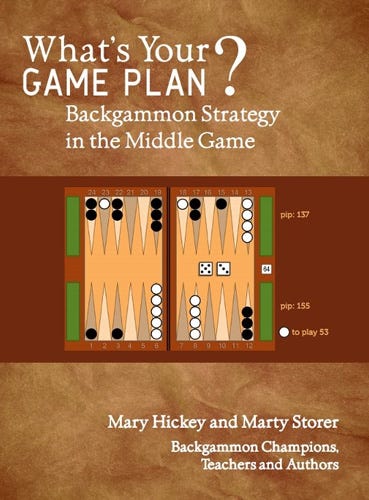
Most backgammon books take a thematic approach to organizing their lessons and example positions. After all, the point isn’t to learn what to do in a specific, unique position — it’s to master principles of play that we can apply to frequently arising “kinds” of situations, right? Well, yes, but somehow backgammon doesn’t always cooperate, serving up problems that yield placidly to general principles. In What’s Your Game Plan? Hickey and Storer serve up 122 gnarly checker-play problems arising from the difficult middle-game phase, and walk you through the thought processes that world-class players use to arrive at the right answer. Many of the problems arise from crucial inflection points in a game, when rival plays lead to substantially different approaches to winning — hence the title. In addition to all the analytical practice, readers will come away from the book with an invaluable over-arching habit: actively thinking about and choosing among the viable game plans available to you, rather than playing backgammon as a series of disconnected quiz problems.
3: Backgammon for Winners — Bill Robertie (2002)

In “Backgammon for Winners,” Bill Robertie shares advanced techniques to elevate your gameplay. With a wealth of insights and analyses, this book guides players towards achieving consistent victories.
4: Boards, Blots, and Double Shots — Norm Wiggins (2001)
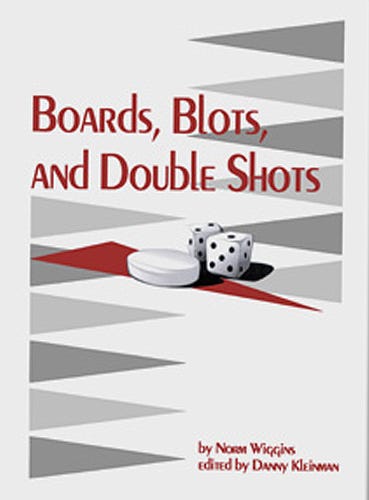
Norm Wiggins’ work delves into critical aspects of backgammon, covering various scenarios involving boards, blots, and double shots. Through insightful analyses, this book equips players with strategies to handle these crucial elements.
5: World Class Backgammon Move by Move — Roy Friedman (1989)
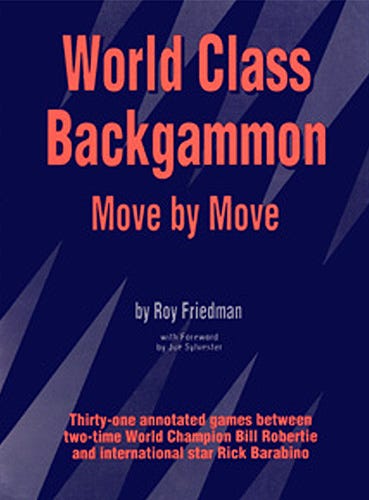
Offering a unique approach, this book breaks down expert-level backgammon moves step by step. Roy Friedman dissects complex positions, shedding light on the thought processes of world-class players.
6: Backgammon For Profit — Joe Dwek (1975)
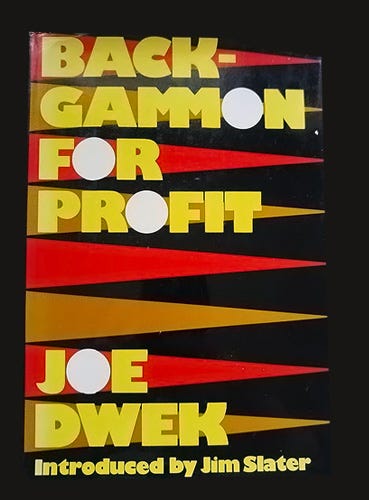
Backgammon For Profit, written around the same time as Magriel’s Backgammon, could almost be regarded as an accompanying quiz book, inviting students of the game to build upon the broad conceptual knowledge provided by Magriel with a variety of more finely-tuned checker and cube problems. While modern backgammon software has found a fair number of Dwek’s solutions to be in error, this book can still be studied to great advantage, particularly if you annotate it with corrections discussed in Jeremy Bagai’s Classic Backgammon Revisited (see below).
7: The Backgammon Handbook — Enno Heyken and Martin B. Fisher (1990)
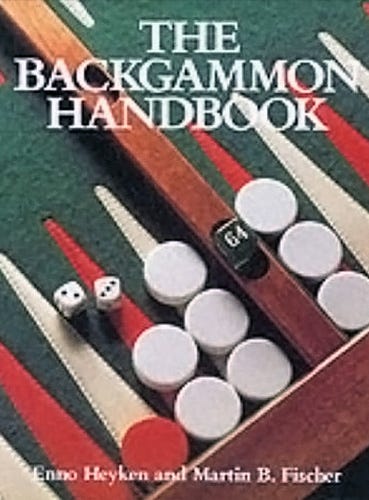
Enno Heyken and Martin B. Fisher present a comprehensive guide that caters to players of all levels. Covering fundamental strategies and advanced tactics, this handbook serves as a reliable companion for improving your game.
8: Starting Out In Backgammon — Paul Lamford (2001)
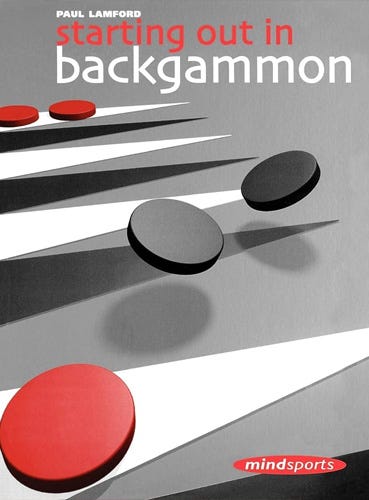
Paul Lamford’s guide is tailored for beginners, offering a structured introduction to backgammon. With clear explanations and illustrative examples, it’s an excellent starting point for newcomers to the game.
9: Backgammon: Winning With The Doubling Cube — Peter Bell (1997)
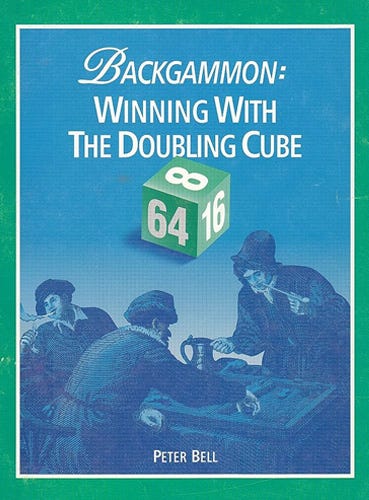
Focused on the strategic use of the doubling cube, Peter Bell’s book delves into the intricacies of this game-changing element. Learn how to wield the cube effectively to gain a winning edge.
10: Lee Genud vs Joe Dwek: The 1981 World Championship of Backgammon — Bill Robertie (1982)
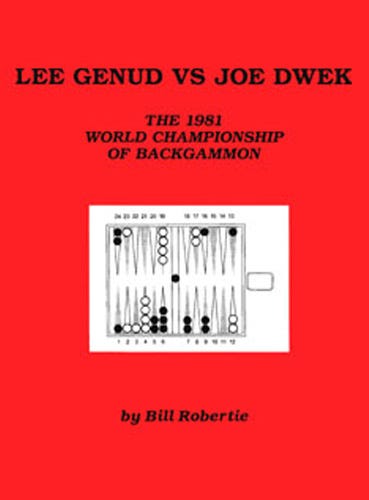
Bill Robertie’s analysis of the 1981 World Championship match between Lee Genud and Joe Dwek offers a fascinating exploration of high-level backgammon play. Through detailed commentary, readers gain insights into the thought processes and strategies employed by elite players.
Bill Robertie is considered one of the world’s top backgammon players and one of the game’s foremost theoreticians. His major tournament wins include two New England Championships (1978 and 1979), the Black and White Tournament in Boston (1979) and the Las Vegas Holiday Tournament (1980). Formerly a columnist for the Boston Globe, he is a regular contributor to Backgammon Times and the Las Vegas Backgammon Magazine.
A graduate of Harvard, Mr. Robertie was a chess master for some years, with victories in both the United States Postal Chess Championship and the United States Speed Chess Championship to his credit. A programmer/analyst by profession, he lives in Arlington, Massachusetts.
11: Matchqiz Series — Kit Woolsey (1994)
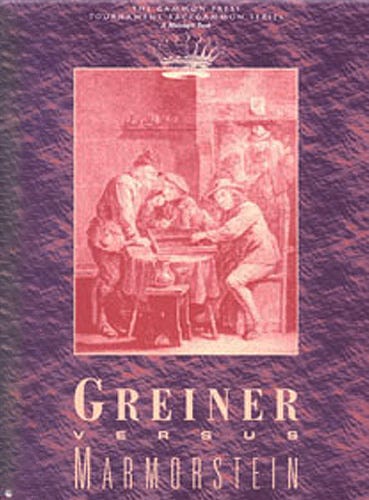
Bill Robertie will tell you that the era of match-analysis books is over — people just don’t buy ’em anymore. If so, that’s a shame. The more popular “problem books” make fewer demands on us as readers: you can read them on the toilet. But to improve in match play — to flourish in high-level tournament competition — more sustained attention is required. These three books by Kit Woolsey simulate the experience of playing out a match in real time with one of the best, most articulate players in the world at your elbow, coaching you through the thought processes of both players. What’s more, as a trio, they illustrate vividly different match-play scenarios: playing from behind (Greiner/Marmorstein), playing with a lead (Sylvester/Ballard), and pitting a ‘pure’ vs. ‘modern’ style of action (Lidov/Heinrich). What’s more, these texts are even more effective now than in 1994, because all three match transcriptions are available on BG Studio, where you can re-play them as one player and then all over again as the other! BG Studio will rate your moves and keep a running PR comparison between you and the original player. You should also download the match files, import them to XG, and temper Woolsey’s pre-bot analysis with state-of-the-art neural net evaluations — because backgammon has come a long way since 1994.
12: Reno ’86 — Bill Robertie (1987)
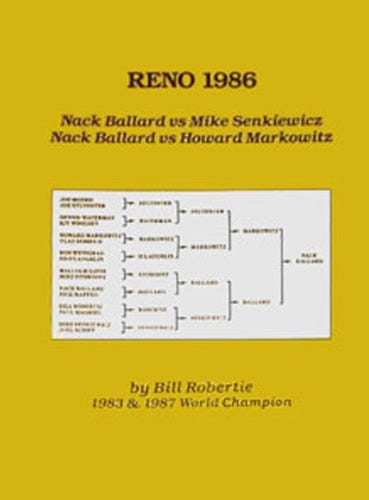
Bill Robertie’s “Reno ‘86” offers a retrospective look at a pivotal backgammon event. Through a detailed account of the 1986 World Backgammon Championship in Reno, readers are immersed in the drama and strategies that unfolded during this prestigious tournament.
13: Backgammon with the Champions — Kent Goulding (1980–82)
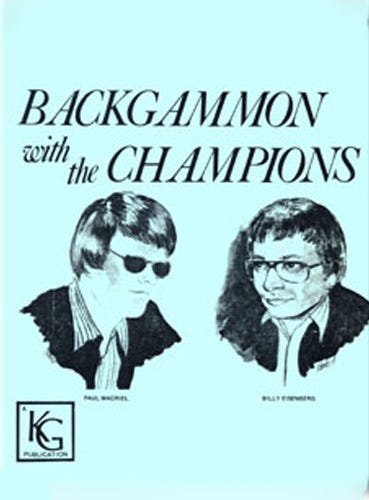
Kent Goulding’s work presents a collection of articles and interviews with renowned backgammon champions. By delving into the minds of these experts, readers gain valuable perspectives on strategy, decision-making, and the mental aspects of the game.
14: Backgammon: The Action Game — Richard Epstein (1979)
Epstein’s book delves into aggressive and dynamic play, offering insights into making optimal decisions in complex positions.
We hope this extended list of backgammon books provides you with a comprehensive array of resources to enhance your skills and strategies. Happy reading and may your backgammon endeavors be both educational and rewarding!
Comments
Post a Comment